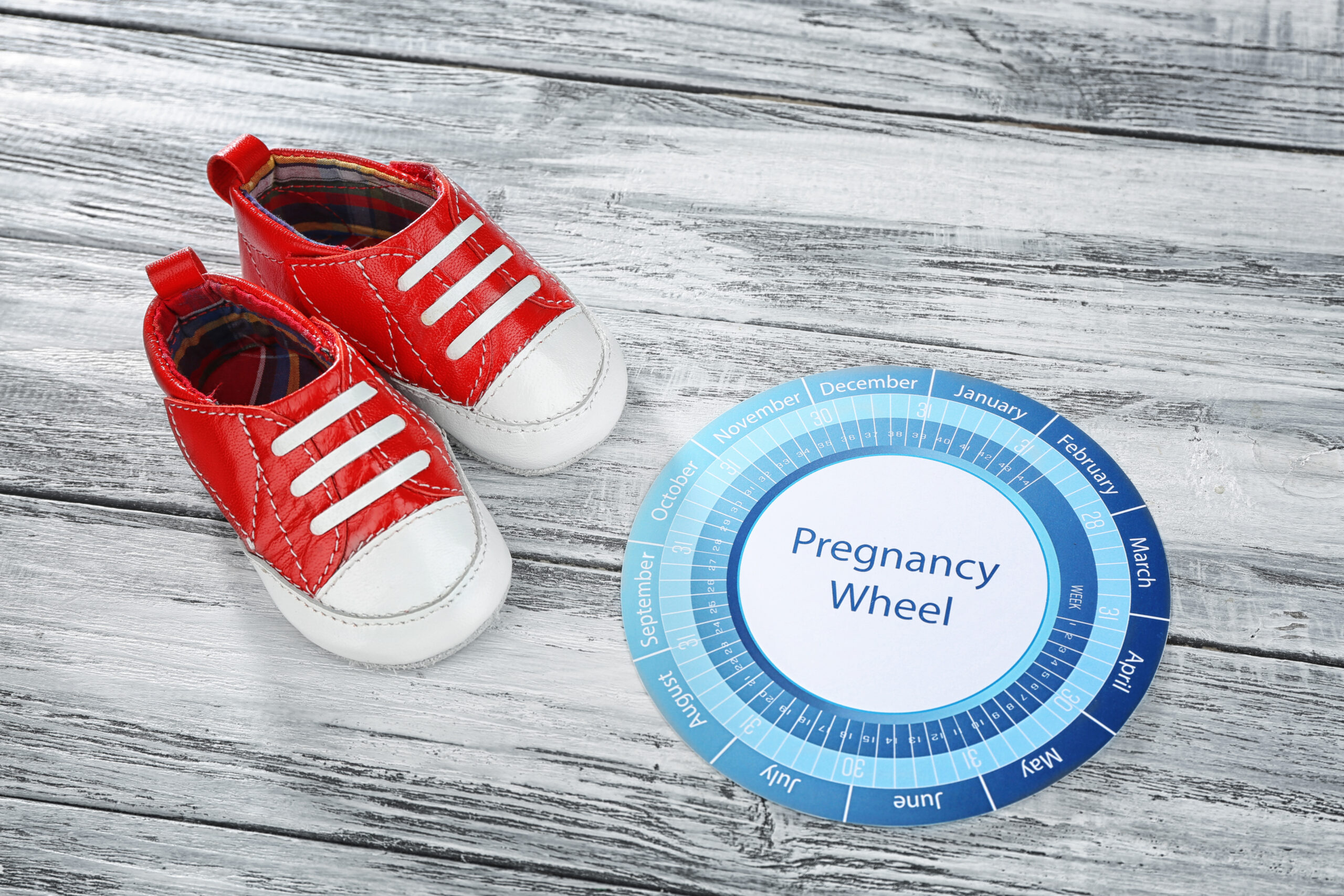Finding out you’re pregnant is a wonderfully happy moment and, as soon as they’ve got over the surprise, one of the first things many parents-to-be do is work out when their little one will arrive.
Due dates can be calculated by two different methods. In the nineteenth century, a German obstetrician Franz Karl Naegal suggested taking the date of your last monthly period, adding one year, subtracting three months and then adding 7 days to work out the date. The more usual method that is used today is to take the first date of your last monthly period and add 280 days or 40 weeks to it. Of course, most people will simply use an app or online calculator to work it out but it’s good to know how the app has arrived at the date.
Whilst it’s helpful to have an idea when your baby will arrive, statistics show that they are very unlikely to arrive on the predicted day. Only 4% of deliveries actually occur on the due date, which gives you an indication of how unlikely it is that your little one will make an appearance when it’s ‘due’. Many practitioners think that the date should be renamed ‘estimated date’ rather than ‘due date’ to relieve mums to be of the pressure that comes when the due date passes with no baby in sight.
The main purpose of due dates is to provide a timetable of care for expectant mums. It enables your obstetrician to know when certain tests should be done and to give a better framework within which to interpret test results. For example, after 40 weeks complications can arise and therefore, depending on a woman’s age and overall health, a care provider may choose to induce delivery if the baby has not arrived. Conversely, if a baby is delivered too early other risks are involved and therefore, a doctor needs to know how far along a pregnancy is in order to make crucial decisions.
Most women will deliver sometime between 37 and 42 weeks, this is known as term. Multiples are full-term at 35 weeks. 60% of women will give birth a week either side of their due date. This figure rises to 90% including the two weeks either side of the date.
In Dubai, frequent scans are common but even in countries that don’t have as many, there is usually one scan in the first trimester that will give a more accurate indication of the delivery date. Ultrasounds or ‘dating scans’ performed in the first trimester are more accurate and usually able to pinpoint the delivery date between 3 and 5 days.
Even with all these statistics to show that it’s only a guide, there is still a lot of pressure when mums go past the due date and many get unnecessarily anxious or distressed. The best advice is to speak to your care provider and determine what the best course of action is for your particular pregnancy as no two are the same. Most doctors will advise waiting at least until after the due date to see if the baby decides to come on its own. Anything after that is usually dependent on the health of the mother and the size of the baby. Your caregiver may decide to induce earlier if there are higher risks involved.







